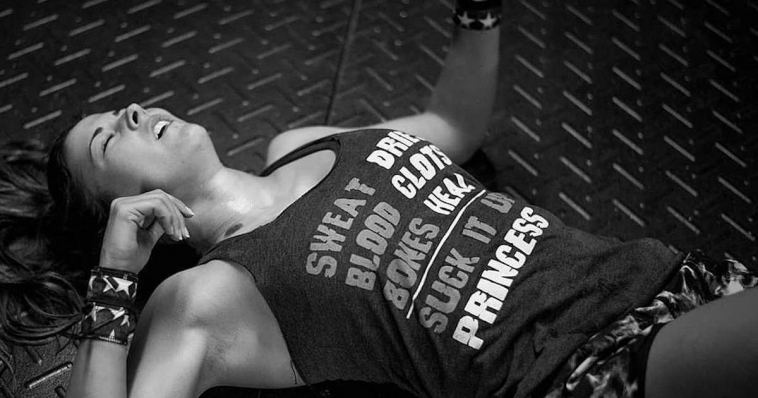- Like
- SHARE
- Digg
- Del
- Tumblr
- VKontakte
- Flattr
- Buffer
- Love This
- Save
- Odnoklassniki
- Meneame
- Blogger
- Amazon
- Yahoo Mail
- Gmail
- AOL
- Newsvine
- HackerNews
- Evernote
- MySpace
- Mail.ru
- Viadeo
- Line
- Comments
- Yummly
- SMS
- Viber
- Telegram
- JOIN
- Skype
- Facebook Messenger
- Kakao
- LiveJournal
- Yammer
- Edgar
- Fintel
- Mix
- Instapaper
- Copy Link
One of the most critical medical interventions of the twentieth century is a saline solution. Chances are high if the hospital is admitting you, it will be placing an IV drip that administers saline directly to your veins. Saline is one of the first items shipped to disaster sites and, at times, is in such high demand that the drug companies making saline experience shortages.1
We Need Salt and Water
Saline solution is just a fancy name for saltwater, and the saline you receive in the hospital is comprised of .9% sodium chloride. A few years ago, the American Society of Health-System Pharmacists (ASHP) recommended that due to the saline shortage, oral hydration should be used whenever possible. Oral hydration is a fancy term for drinking.
Most of us acquire the right amount of water and salt naturally, through drinking water and eating food. We need both water and salt to maintain adequate blood sodium levels of 140 millimoles of sodium per liter of plasma.2 This number is finely tuned; dropping below 135 mEq/L can lead to a myriad of issues, including:
- Cognitive impairment (think headache and confusion)
- Seizures
- Comas
The medical term for this is hyponatremia.3
Several things cause hyponatremia, including prolonged vomiting and diarrhea. It can also occur in endurance athletes who over-drink. If an athlete consumes more water than they secrete through sweat and urine, they experience an increase in total body water compared to total body exchangeable sodium.4
How Much Is Enough?
This leads to an interesting question—how do you know when you’re drinking too much water? And how much water should you drink?
Maybe not eight glasses a day, suggests Eduardo Dolhun, a medical doctor with a particular interest in dehydration. (He also founded Drip Drop, an electrolyte powder5 that contains a precise ratio of electrolytes specifically designed to be used as an oral rehydration therapy, so there may be a financial bias.) “Do you see the Massai running with water bottles?” he asks in James Hamblin’s book, “If Our Bodies Could Talk.” 6
He has a point. I searched images of Kenyans training and couldn’t find a single picture of anyone with a water bottle. The Kenyans are some of the fastest humans on earth. Though their climate is relatively temperate (they train in the morning and late afternoons, when it’s often in the low 50s and 60s F), it’s also at altitude, and they aren’t exactly moving slowly.
Intrigued, I ran a PubMed search7 to find out about Kenyans drinking habits. It turns out, researchers have found the Kenyans are hydrated day-to-day with ad libitum fluid intake. Ad libitum fluid intake means they drink whenever they want, however much they want. They also eat a diet comprised of low processed foods, including lots of vegetables and the occasional glass of whole milk. Hence, their dietary habits, perhaps, meet their daily needs without too much additional tinkering.8
It’s worthwhile to note that urination and feeling thirsty are the ways we evolved to regulate our fluid status. We also have the built-in ability to know what kind of drink we need intuitively—the taste buds in the mouth send messages to the brain about how much salt to ingest and how much water is required. These messages cause a cascade of anticipatory reflexes that send information about when to start and stop drinking; this occurs before the water hits the bloodstream. These signals come from both the gut and the brain.9
Drinking in modern culture isn’t necessarily based on thirst. It’s based on:
- Pleasure (alcohol, hot chocolate, or lemonade on a summer’s day)
- To rev us up (caffeine)
- To calm us down (chamomile tea)
We become adept at either pre-empting thirst signals (drinking because we feel like we should) or ignoring thirst signals, just like we learn to ignore other interoceptive signals like pain, sensitivity, or hunger.
Listening to Our Bodies
Interoceptive signals are your internal cues about how you are feeling. Much like the information from the external environment, like what you see, hear, and smell, informs your sense of safety and plays a large role in your movements and behavior, it also, makes your conscious and unconscious interpretation of your interoceptive cues.
Maybe part of what moves us out of our physiological balance point is a shift away from listening. When we reconnect with the ability to pay attention to what our body is asking for, often, the solution unveils itself readily, whether it’s drinking water, eating a specific food, or moving in a particular way.
There is simplicity in listening, and simplicity is often confused with a lack of depth, as though the simple solution can’t be the real solution because it’s too easy. Instead, we search for complexity, and perhaps it is within this complexity that we lose touch with what it is that we need.
Improvisational Movement
When was the last time you sat down on the floor and permitted yourself to begin moving to see what showed up? And maybe instead of fighting your initial instincts because you weren’t sure they were right, you allowed yourself to move in a way that felt good and nourishing in some way?
- Nourishment can show up as strengthening or stretching.
- Nourishing movement can also show up as gentle movement, not fitting neatly into one box but still feeling supportive in some way.
You can try this right now. I will take a break from writing and do it with you. I usually do it for the length of one song, but if music isn’t your thing, set a timer for four minutes and see what happens. And if you have never done improvisational movement before and don’t know where to start, pick one body part and begin moving it. See how the movement unfolds, spend time with what feels interesting, and see where that leads you.
How was that? How do you feel now compared to four minutes ago?
I feel so much better, and I didn’t even know I didn’t feel right before. The first song was too short (two minutes), so I went for two songs or about six minutes.
I started with stretch-type movements and rolling movements for my legs, which are sore from my workout two days ago, and that morphed into a fascinating upper extremity loading, leg mobility exploration. My legs feel less sore, I feel more energetic, and I feel more connected throughout my entire system.
When things get so out of balance, you no longer remember how to listen to your internal cues, and you can’t tell when you’re thirsty or when you could use some broccoli, take a moment to pause, and listen. Honor what you hear and see what happens.
Fred Rogers once said, “I feel so strongly that deep and simple is far more essential than shallow and complex.”
Maybe learning to apply this basic principle to our selves is the ultimate biohacking technique. Or perhaps that’s too easy.
References
1.U.S. Food & Drug Administration. FDA Commissioner Scott Gottlieb, M.D., “updates on some ongoing shortages related to IV fluids,” Press Release, 2018, Jan 16.
2. Parsons P.E., & Wiener-Kronish J.P., 2013. Chapter 45: Hyponatremia and Hypernatremia. In B.W. Butcher and K.D. Liu (Eds.), “Critical Care: Fifth Edition,” pp. 322-328. Elsevier. Google Books.
3. James L. Lewis III, MD. Hyponatremia. On Merck Manual Professional Version. 2020.
4. Hew-Butler, Tamara, et al. “Exercise-Associated Hyponatremia: 2017 Update.” Frontiers in medicine, vol.4:21. Mar 3, 2017.
5. DripDrop, ORS, “Oral Rehydration Solutions (ORS) are a scientific breakthrough that treat and prevent dehydration for millions of people worldwide.” Accessed Aug 30, 2020.
6. James Hamblin. “If Our Bodies Could Talk: A Guide to Operating and Maintaining a Human Body.” Doubleday. 2016.
7. Fudge B.W., Easton C., Kingsmore D., Kiplamai F.K., Onywera V.O., Westerterp K.R., Kayser B., Noakes T.D., & Pitsiladis Y.P., (2008). “Elite Kenyan endurance runners are hydrated day-to-day with ad libitum fluid intake.” Medicine and Science in Sport and Exercise. 2008 Jun; 40(6),1171-1179.
8. Christensen, Dirk L. “Diet Intake and Endurance Performance in Kenyan Runners.” Equine and Comparative Exercise Physiology 1, no. 4 (2004): 249–53.
9.Popkin B.M., D’Anci, K.E., & Rosenberg I.H., “Water, Hydration, and Health.” Nutrition Review, Vol 68(8):439-458. 2011.


